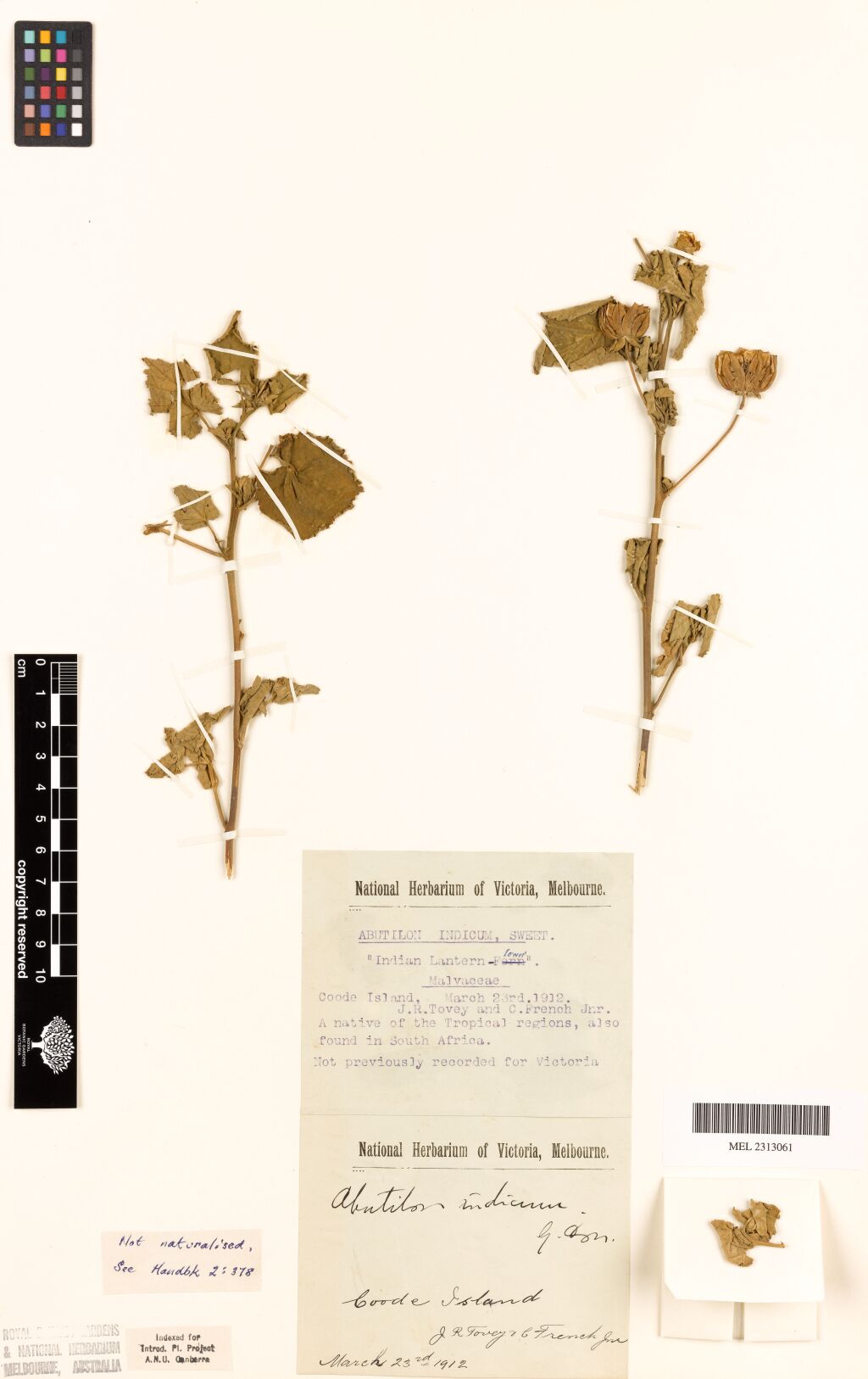Malvaceae
Herbs, shrubs or trees, usually with stellate hairs on vegetative (and sometimes floral) parts, usually producing mucilage. Leaves alternate, simple, petiolate, usually palmately veined; stipules normally present. Inflorescence axillary, leaf-opposed or terminal, mostly many-flowered cymes or panicles, rarely flowers solitary or paired. Flowers bisexual (rarely, unisexual); epicalyx often present; sepals 5, free or united at base; petals 5, free, sometimes minute or absent; stamens usually numerous (rarely as few as 5), the filaments united for most of their length into a tube, sometimes shortly adnate to petals, or free and opposite petals; anthers dehiscing by longitudinal slits or terminal pores; ovary superior, simple or on a gynophore; carpels 1–many (often 5), free or fused; styles free or united. Fruit a loculicidal capsule, separating into mericarps or woody follicles (in Victoria), rarely a berry or samara.
About 243 genera with over 4200 species, almost cosmopolitan but commonest in the tropics; 68 genera and c. 760 species in Australia.
Now includes Sterculiaceae.
Barker, R.M.; Walsh, N.G. (1996). Malvaceae. In: Walsh, N.G.; Entwisle, T.J., Flora of Victoria Vol. 3, Dicotyledons Winteraceae to Myrtaceae, pp. 331–355. Inkata Press, Melbourne.
 Spinning
Spinning


